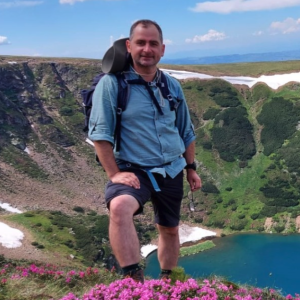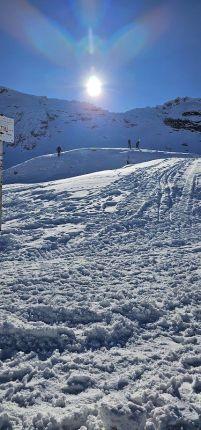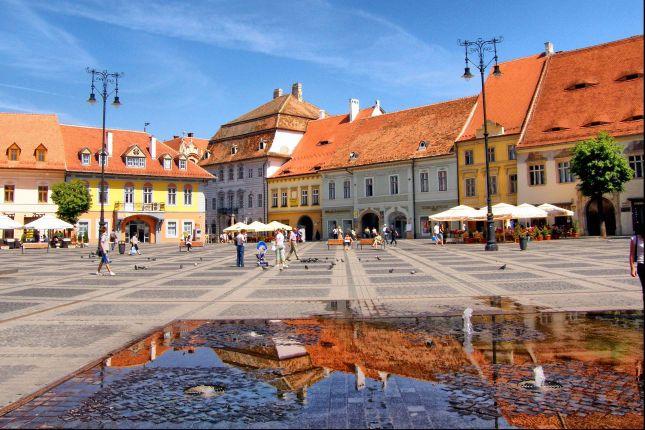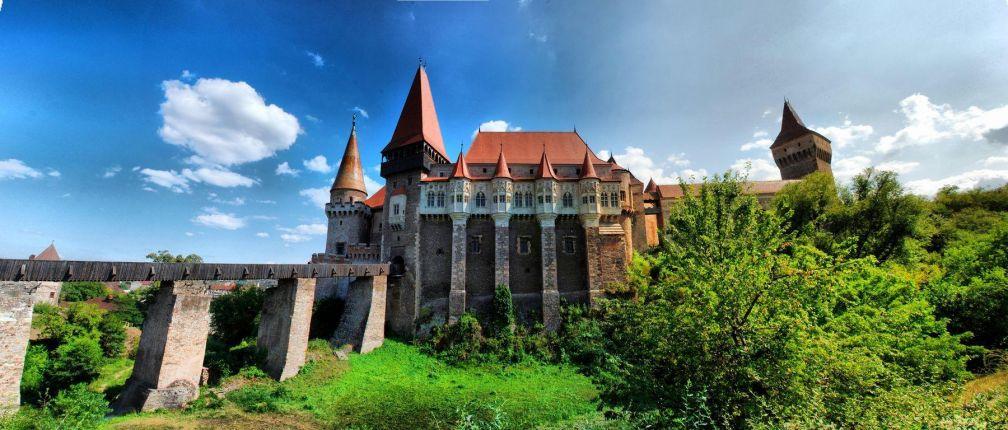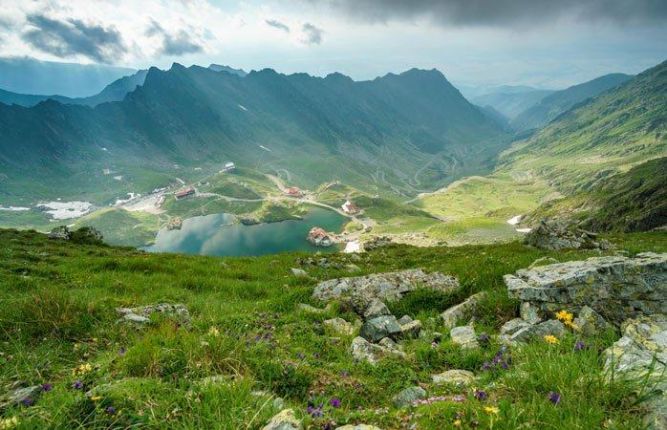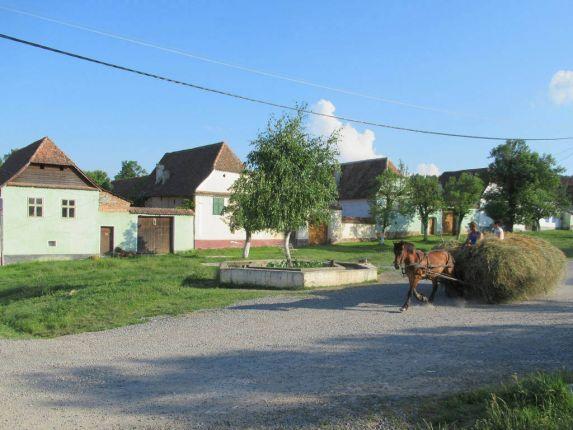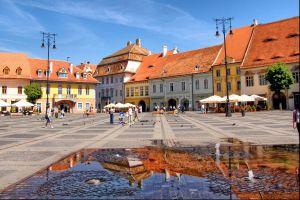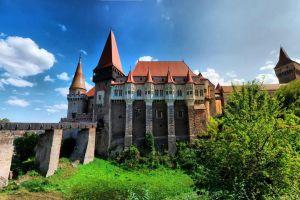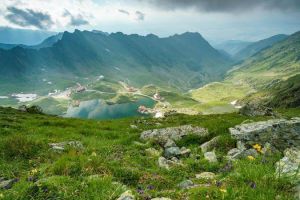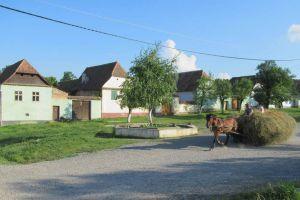
Tours & Day Trips in Sibiu
Often ranked as one of the most idyllic places to live in Europe, this 12th century settlement became the heart of Transylvanian politics, culture and trade. Slow life, friendly people, and a vibrant multicultural scene in a medieval setting is gives Sibiu a bohemian air.
Why visit Sibiu? This medieval town is famous for its Upper Town and Grand Square, and Lower Town with its Small Square, where many cultural events take place. With lots of side streets, churches and historical monuments, the best way to explore the city is on a walking tour. Our complete guide on things to do in Sibiu will give you a better idea of what to do in Sibiu.
Sibiu is also an ideal base for day trips to visit top attractions in Transylvania. Popular tourist attractions such as Alba Iulia Citadel, Corvin Castle, Transfagarasan Highway and Bran Castle are all within reach on a guided road trip for the day.
See below the best day trips from Sibiu and city walking tours, and if you need help with planning your trip contact us!
Tour type:
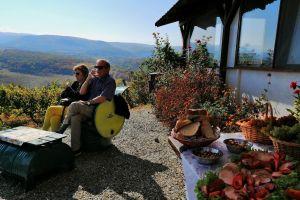
Wine Tasting in Transylvania Countryside
Start from: Sibiu
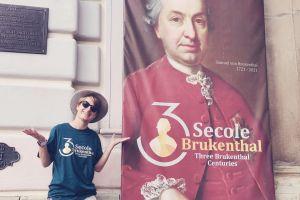
Freemasonry in Sibiu: Symbols, Brukenthal's Legacy and Influence
Start from: Sibiu
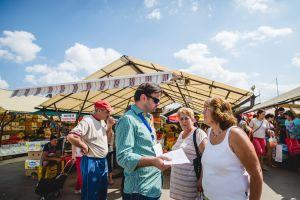
Sights & Bites of Sibiu: Street Food, Ciorba & Stories
Start from: Sibiu
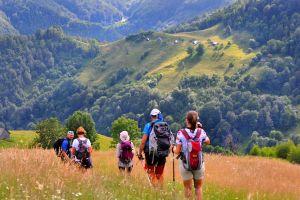
Picturesque Hiking Day Trip in 'Hay-Hut Country'
Start from: Sibiu
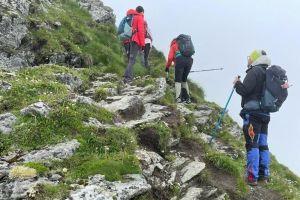
1, 2 or 3 Day Hiking Trip in Fagaras Mts: Summit 4 Peaks in One Day!
Start from: Sibiu
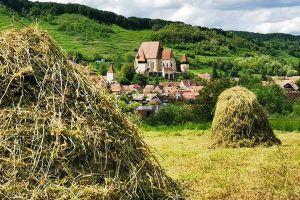
[1 or 2 Days] Life in Transylvania: Sighisoara Citadel & Saxon Villages
Start from: Sibiu
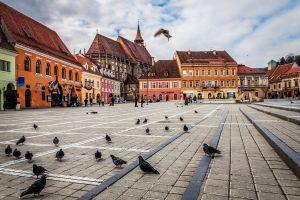
Brasov Day Trip: Hike, Mountain Villages, Bears & Bran Castle!
Start from: Sibiu
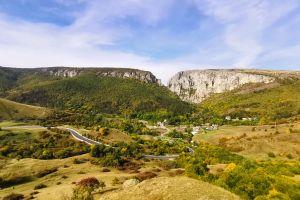
Day Out in Nature: Visit Turda Salt Mine & Hike in Turda Gorges
Start from: Sibiu
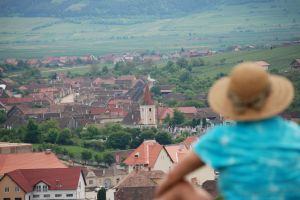
Day Trip: Village Life in Sibiu Countryside
Start from: Sibiu

{{ activity.title }}
Start from: {{ activity.starting_point }}
Reviews about Tours & Day Trips in Sibiu

This was an amazing experience with a very knowledgeable and generous guide - wasn’t worried about how long we took - didn’t feel rushed and very accommodating : very very highly recommended!! September 2025

Adela was wonderful! Very friendly and knowledgeable. I felt safe with her driving and we had a wonderful experience on our road trip. We even saw the bears and Adela pulled over so we could take pictures. The only negative was the time we spent at the Abbey. I feel that could have been shortened. All in all we had a wonderful day

Un très chouette moment avec Adela, qui a pris le temps de nous faire découvrir cette belle région ! Romania friend a été très efficace, et ce fut une grande joie de passer près de 7h avec notre guide dans ce tour ! Je recommande fortement a tous les Français de passage, c'est un plaisir d'échanger dans sa langue natale et pas en anglais !

Our tour with Dumitru, a colleague of Florin, was amazing! Before the hike we got well instructed and Dumitru took care of a well planned route according to the weather conditions. He prepared us well with all necessary information and also made sure that we had enough water and food with us. We had a wonderful day in the Fagaras Mountains, felt very safe with our guide and even got an extra trip on another peak as we were quicker as planned. The cherry on the cake was Dumitru's knowledge about the area as well as the history of Romania which he shared with us. We highly recommend Dumitru as a guide and hope to be able to return to the beautiful mountains in Romania!
Best Tours & Top Things to Do in Sibiu
Tourists and locals alike see Sibiu as one of the most charming old cities. From modern establishments which make life easier and in tune with the times to its well-preserved heritage, Sibiu is the perfect blend between new and old, function and tradition, innovative and historical. If you’re planning to visit the city, you’ll be surprised at the many tourist sights the city has, as well as the numerous day trips from Sibiu you can do on your holiday in 2025!
The medieval town of Sibiu, or Hermannstadt, in its original name, was built in the 12th century by German settlers from the Rhine-Moselle region on the ruins of Roman outposts and is home to the largest German minority in Romania. Two centuries later, the city became a modern trading post – the very city center being a testament to this, as trade was the initial destination of the two main city Squares, with 19 guilds and a community that encouraged investment and cultural events, step by step leading to the evolution of the city into the modern hub of civilization in the West of an Eastern country. Go on a guided tour of Sibiu if you want to learn more about the city’s fascinating culture and history.
Eventually you’ll come across the fortified city walls and defence towers of Sibiu, a common feature of cities in Transylvania. Look for info boards and you’ll soon feel like you’re visiting an outdoor history museum.
In 2007, the city was designated European Capital of Culture. This was a significant achievement because it coincided with the year Romania joined the European Union, and it was also the first time this title was given to an Eastern European country since the fall of the Berlin Wall.
A Sibiu food tour abounds in Romanian food options (Fantanita Haiducului, Crama Sibiul Vechi, or Butoiul de Aur,, the oldest restaurant in Romania and part of the Sibiu historical patrimony). Besides the usual international options (like the Osushi Japanese restaurant, among the best rated on Tripadvisor), you’ll also find restaurants that reinterpret traditional Transylvanian dishes with a modern twist.
A mere trip through the city center will leave you baffled by the choice of restaurants, cafes, brasseries, ice cream or crepe parlors, confectioneries, and tea rooms. A guided food tour of Sibiu will help you discover regional dishes and visit a farmers’ market and family-owned boutiques with unique products.
Situated in the center of Romania and in the heart of Transylvania, Sibiu offers numerous opportunities for city tours and short road trips to famous tourist attractions. Go on a guided day trip with a local guide to discover how Romanian, German and Hungarian heritage blend into the architecture, cuisine and customs of the region.
Book a guided a day trip in Sibiu to discover Romania’s culture, history, and natural beauty. From medieval castles and Saxon villages with colorful houses, to hikes in Faragas Mountains or a thrilling roat trip on Transfagarasan highway, to a car ride along beautiful 19th-century villas on your way to the Paltinis mountain and ski resort
Some of Romania’s main attractions for tourists can be visited on day tours from Sibiu: the medieval city of Sighisoara, one of the best preserved and still inhabited fortresses in the world, Corvin Castle with its impressive and scary stories, world renowned Bran Castle (aka Dracula’s Castle) and the 300-year-old Alba Iulia Citadel.
- The Grand Square (Piata Mare)
The touristic epicenter of Sibiu is its very own Grand Square. This is the first stop, where tourists and locals alike flock to while taking a walk through the old town. This is where festivals are held, protests are organized, and the place of the Sibiu Christmas Market, the season’s main attraction and one of the most appreciated in Romania and in Europe.
It was drawn up in 1366 and measures 142 by 92 meters, one of the largest in Transylvania and a perfect place for markets and fairs. Trade is at the heart of Sibiu development, like it was for all medieval cities, but it was the cultural scene that made the square flourish. It underwent some major construction works in 2007, to consolidate and upkeep its historical buildings. Now, the Grand Square is home to several UNESCO historical monuments, which you can learn more about on a guided tour of Sibiu.
The Brukenthal Palace, an imposing Baroque edifice built between 1777 and 1787 by baron Samuel von Brukenthal, hosts art galleries (Romanian and European) and an impressive palace library. Another Baroque structure next to the Palace is the Jesuit Church, or the Holy Trinity, a Romano-Catholic religious establishment. It is a beautiful church with valuable altar paintings, which can be visited throughout the day. Moringer House, Council Tower, Haller House, Hecht House, and Lutsch House are other famous sights in the Grand Square.
- Brukenthal Museum
Originally Brukenthal Palace and the residence of nobleman Samuel von Brukenthal, Habsburg governor of the Grand Principality of Transylvania and personal advisor to Empress Maria Theresa. The baron’s statue is in front of the museum in the Grand Square.
He was also and art collector, so on his birthday, July 24, you can visit the art museum for free. Upon his death, he made provisions for the palace to go to the city and become a museum.
His art collections are impressive and the palace itself is great to visit. This institution first started displaying Brukenthal’s collection more than 200 years ago, and you’ll be able to see approximately 1200 German, Dutch, Flemish, French, Spanish and Italian paintings from the Renaissance, Baroque and Rococo periods. To give you an idea of the standard of the art collection, you’ll find works by Albrecht Dűrer, Peter Paul Rubens, Van Eyck, Memling, and Titian.
The Romanian Art Gallery was first curated in the 19th century, and it holds paintings of famous Romanian painters such as Nicolae Grigorescu, Theodor Pallady, Corneliu Baba, Theodor Glantz, Robert Wellmann, and many more.
- The Jesuit Church or the Holy Trinity Roman Catholic Church
This Roman Catholic church is immediately adjacent to the Brukenthal Palace and is listed as a historic monument by the country’s Ministry of Culture and Religious Affairs. More than being a place of historical importance, this is the Church where Romanian President, Klaus Iohannis and his wife attend important services, as they are from Sibiu, part of the Saxon community, and Roman-Catholics. This only shows how diverse the country is and why some minorities were so well integrated.
Viennese Baroque architecture inspired with simple exterior elements and rich interior decoration. The confession chairs date from the Jesuit period, and the interior fresco from the main shrine is an extremely valuable representation of the Virgin and Child. The church’s present organ was made by Viennese organ manufacturer Karl Hesse and was installed in 1860.
The church tower is built over a narrow passage connecting the Great Square to the Small Square. For the Jesuits to be allowed to build this tower, the authorities asked them to guarantee this passageway to ensure easy access between the two main squares.
- Get a panorama of Sibiu by climbing the Council Tower
Another interesting passageway connecting the two squares is through the Council Tower it was open to the public in 1930. However, the building is mentioned in documents in the 14th century, but it is presumed to be even older than that. In the 16th century, the upper stories collapsed, and it has since undergone several repairs and structural changes, most of them done in the 18th century.
Historically, the wealthier Saxons lived in the Upper Town where the Grande Square is located, while the peasants lived down the steps, in Sibiu’s Old Town, where you’ll find the Little Square.
The tower is now used for exhibition and is regarded as the town’s most iconic building. If you climb the 141 steps, you can see the clock mechanism located on the 5th floor and enjoy a view over Sibiu’s rooftops.
It’s a bit of a climb, depending on your fitness level. But it is certainly not a challenge. The entrance fee is very small (RON 2), but the view of old Sibiu center with its cobbled streets is priceless. Some describe it like looking through a snow globe. Try to avoid large crowds, pick hours at the beginning or the end of the program. This way you will have the time to take in the sights and make your climb really worthwhile.
- have a meal in Small Square (Piața Mică)
The Grand Square boasts most of the big markets and fairs, and it is usually busy and filled with people. No matter how much we like it, a little break is always welcome. So, if you take one of these quaint little passageways, through the Council Tower or next to the Jesuit Church, you will find yourself `far from the maddening crowd`, but still in the center of Sibiu.
The Small Square (Piata Mica) is actually not that small, but it has a very irregular shape, being divided in two by Ocnei Street that descends under the Bridge of Lies (or Liars’ Bridge, according to some translations) towards the Lower Town.
This was the center for craftsmen and merchants where you would have found gold workers, pelt dealers, tanners and furriers and is now home to many cafés and restaurants where you can relax, enjoy a delicious meal, and watch the locals go about their business. Extensions of the Grand Square events are usually present in the Small Square as well, like some merchant kiosks, some food trucks, but the place is considerably less crowded, and you can sit down for a relaxing coffee at any local restaurant and café in the area.
The Bridge of Lies itself is a sight for the postcards. The iron cast bridge dates back to the end of the 19th century and, according to urban legends, the bridge creaks if you tell a lie while crossing it. Find out for yourself during your tour in Sibiu!
- Holy Trinity Cathedral
Since religion played a very big part in the cultural and urban development of the times, there are various churches we recommend you visit in Sibiu to understand how the city evolved.
Still in the city center, yet not in the old town part of Sibiu, the Holy Trinity Cathedral is a Byzantine architectural gem. This Orthodox Cathedral is located on Mitropoliei Street no. 35 and is the seat of the Romanian Orthodox Archbishop of Sibiu and Metropolitan of Transylvania (Mitropolitul Transilvaniei). It was built between 1902 and 1904 in Byzantine style after the plans of Budapest architects Virgil Nagy and Kommer Jozsef.
It has a capacity of 2000 people, a dome 25 meters high, and four towers. The Northern tower hosts a bell weighing almost one ton and a half, installed in 1904 and used to call the faithful to mass and prayers on the holly days. The interior frescoes are quite impressive. A tour through the cathedral feels like passing from one Biblical scene to another, giving you an insightful look into the Orthodox faith.
Another impressive religious edifice is the Gothic sister of the Black Church in the city, surrounded by fortress-like massifs ((Brasov), the Evangelical Church, or the Sibiu Lutheran Cathedral.
- Food tours in Sibiu and gastronomy
In 2019, Sibiu was in the spotlight again as European Region of Gastronomy, a title it received from the International Institute of Gastronomy, Culture, Art, and Tourism (IGCAT) for its distinctive food culture.
Go shopping for Traditional Local Food at the Ecological Products’ Fair: local producers from the areas surrounding Sibiu gather every Friday between the hours of 8 in the morning and 2 in the afternoon, to sell their homemade products. You’ll find high-quality cheese, sausages, warm bread, fruit, and vegetables, all from the producer’s farms and gardens.
The best way to get a better picture of the food culture in the region is to go on a day trip in the countryside of Sibiu known as Marginimea Sibiului. You will be given the context and you will be presented with the source and taste of various types of regional foods.
Our friendly guide will take you to a restaurant where you can really take in all this info with your taste buds. We recommend skipping a full breakfast and preparing to taste fresh cheese, fruits, and vegetables, cured meats and saussages. Hopefully, the walk over to the restaurant will burn some calories and make room for a Romanian traditional meal. And since there is always room for dessert, it will be served separately, at a café, to enjoy another brisk little walk and talk and to give you the opportunity to check out another establishment.
Poteca Slow Food: This project was designed to teach children how important it is to know the source of the food products they eat. This tour is a great option that explores the local cuisine and traditional dining customs of the surrounding villages, and there is even a brochure for children with explanatory stories. The best time for this is in Summer and Autumn when seasonal produce from local farmers are available.
A special treat, but only for the lucky few who happen to be in Sibiu when locals were to organize it, would be an EcoBrunch. This is a special picnic, organized on location in various parts of Transylvania by EatLocal, a group that has gathered certified partners in tourism and agrotourism to bring something truly authentic to the table, the perfect choice for a Sunday treat for locals and tourists alike. Occasional brunches are organized in idyllic places all over Transylvania, locals bringing their best foods to these events and inviting you to taste and enjoy a lovely meal outdoors in a beautiful setting. Check the program when you visit Sibiu and talk to our guides about going to these events on a day trip from Sibiu.
Day trips from Sibiu. Nearby tourist attractions
- Transfagarasan Road
This is probably one of the most spectacular daytrips from Sibiu you can book a must-see attraction in Romania, and the most important landmark in the area. The Transfagarasan road is the second-highest road in Romania, with an altitude of 2,042 meters.
The Transfagarasan, however, although a remnant of Communist constructions that was keen on oversized infrastructures, is magnificent and offers a thrilling ride by car. It starts near a village called Bascov, near Pitesti, and ends after 90 km (56 miles) in Cartisoara, another town located only 47 km away from Sibiu.
Part of it is closed for driving between 1 November – 30 June due to snow and high risks of avalanches. When this happens, the road is accessible only on a day trip from Sibiu, which will take you on the road to Balea cable car, and from there, you’ll go over it to Balea Lake, where you can enjoy the superb views of Fagaras Mts and Transylvania’s plains.
In 2009, it was featured on Top Gear, and Jeremy Clarkson gave it the title of “ Best Road in the World”. Because of its steep turns, long S-curves, and sharp descents, a road trip on Transfagarasan Road is attractive to drivers, motorcycle enthusiasts and cyclists. So this is one of the best day trips you can do from Sibiu.
But it’s much more than that. Driving or simply being a passenger is an experience in itself. A couple of hairpin turns will make this ride compete with fair rollercoasters. The winding road gives you the impression of going round and round only to look at the landscape repeatedly, but each time from a different altitude.
On a guided tour to Transfagarasan Road from Sibiu you will see other attractions such as:
Vidraru Lake – if you drive down South on the road, you will arrive at another good example of communist mega-structure, this artificial lake, with a circumference of 28 km (17 miles), was created in 1965 when Vidraru Dam was built for hydroelectricity production. It was then the fifth largest in Europe, with walls as high as 166 meters, covering a surface of 900 hectares, and needing a network of 42 km of underground galleries to keep it functional. On the right bank, you will see a statue, done by sculptor Constantin Popovici, of Prometheus holding two lightning bolts to symbolize the production of electricity.
Poienari Castle - further down South on the road, you will arrive at Poienari Castle. Although Transylvania holds the promise of Dracula, vampires, and Tepes stories, this tourist objective delivers some true information about Vlad Tepes. Get an insight into who the man was and why Romanians do not regard him as the villain depicted in Bram Stoker’s Dracula.
Balea Lake – the winding Transfagarasan road will take you up to Balea Lake, a glacial lake close to the highest point on the road, at an altitude of 2,034 meters. The area is accessible by car only when the road is open from July - October. You can take the cable car for the rest of the year and enjoy the frosty views. Food and refreshments can be found at two chalets open all year round, as experienced skiers love the slopes in the vicinity.
Although still chilly, even in the summer months, the view of the Balea Lake changes from frosty white to cool green, as high-altitude specific plants and grass cover the rugged stones of the Fagaras Mountains, the highest mountains in the country. You might find the tour up the Transfagarasan Road worth it, but the view you find up here is just as worthy.
Balea Waterfall – as you slowly try to peel away from the magnificent view of the lake and its surroundings, make your way further down South on the Transfagarasan Highway to Balea Waterfall, situated between Moldoveanu and Negoiu peaks. The water from this waterfall springs from Balea Lake, and the stream travels along Transfagarasan Road as you descend. At around 1400 meters, it forms a 60-meter-high superb waterfall, one of the natural wonders in the area.
- Corvin Castle
Take a memorable day trip from Sibiu to Corvin Castle and see this impressive Gothic-styled historical attraction in the neighboring county of Hunedoara. It is one of the largest in Europe and made the list of the Seven Wonders of Romania. You’ve probably already seen parts of it if you watched the horror movie “The Nun.” In reality, the castle is made to look more like “fairy tale” than “house of horrors”.
Corvin Castle, or Hunyadi Castle, was built over the site of an older, 14th-century fortification, while the 15th-century construction works done by Iancu de Hunedoara aimed at turning the fortification into a castle with its massive, commanding structure, with solid walls, tall towers, and bastions, multicolored roofs, numerous windows, and balconies decorated with intricate stone carvings and an inner courtyard.
Three circular towers, the Capistrano Tower, the Drummers’ Towers and the Deserted Tower, were used for defense purposes and had living quarters. The Buzdugan Tower (defense tower) , also known as the Painted Tower, has only one defense level and is adorned with frescos on the exterior. The rectangular towers of the castle are the entrance towers, with paved walkways, mobile bridges, and serious defense structures.
- Sighisoara Citadel
You cannot travel to Sibiu and not visit Sighisoara on a day trip. This touristic gem is situated in the neighboring county of Mures. There, you will visit the Sighisoara Citated (pronounced See ghee swahr' ah), which refers to the old, historic center of Sighisoara medieval town. In 1999, Sighisoara was declared an UNESCO World Heritage Site because of its rich history and importance in depicting Transylvanian Saxons' culture.
This is Europe’s best preserved and still inhabited medieval fortress. If you have the extra time, you can even spend the night in the beautiful boutique hotels located right in the fortress. This is the perfect way to make for a unique and authentic experience.
If you only have time for a day trip, hire a friendly guide to take you on a tour of this important attraction in Romania and Transylvania. You can reach the citadel center by car, but there are many pathways from the city. It’s a bit of a climb, yet accessible, with plenty of look-out points. All the alleys in the citadel are paved with cobble stone so make sure to wear comfortable shoes on your tour from Sibiu. Avoid shoes with high heels or soles too smooth as you can slip, especially in areas with a bit of a slope. Child strollers, although not forbidden, are hard to manage.
The citadel dates back to the Dacians (ancestors of Romanians) who built a fortification called Sandava, which the Romans (also ancestors of Romanians) later called Castrum Stenarum. In the 12th century, Saxon settlers built a new citadel over it, which they called Schäßburg. Sighisoara also happens to be the birthplace of Vlad the Impaler (the ruler who inspired the fictional character Dracula) and you can even visit his house but that’s just one of the many attractions this well-preserved 16th-century cultural treasure has to offer.
The most representative building in Sighisoara is the Clock Tower, dating back to the 14th century. In 1676, craftsman Johann Kirtschel made and added the wooden figurines set in a dial representing the days of the week. Every hour on the hour, you can admire the show of the old clock wooden figurines, which is something to look forward to if you have to queue to go up the tower. In the holiday season, the place can get a bit crowded, especially on weekends. The tower is closed for visits on Mondays.
One of the favorite things tourists love to visit on their tours from Sibiu is the unspoiled countryside and picturesque sceneries of Transylvania. This can be seen best in the Saxon villages surrounding Sibiu.
Transylvania is a great place to explore the legacy Saxon communities developed over the centuries if you're a history buff. Once you start wandering through this network of villages on a guided day trip, you’ll experience a fairytale kind of atmosphere.
Sibiu may be in the top ten idyllic European cities to live in - but the countryside of Sibiu is probably the top choice for most Romanians living in a city and dreaming of a bucolic escape. There are excellent facilities, people are nice and good-humored, the villages are orderly and inviting. In other words, you can experience an authentic, traditional lifestyle in full modern comfort.
Since this region was sparsely populated and under constant threat of Ottoman and Tartar invasion, in the 12th century, King Géza II of Hungary invited Saxons to settle here and defend the area. They received special status and formed strong farmers, artisans, and merchants communities.
They also built fortifications for military purposes and now this region boasts one of the highest numbers of fortified churches dating from the 13th to 16th centuries, being listed as a UNESCO World Heritage Site.
- Viscri: the most famous of the Saxon villages in Transylvania
The small village of Viscri (Weisskirch) is another major tourist attraction that can be visited on a day trip from Sibiu. It’s located about 40 km from Sighisoara and 120 km from Sibiu. It’s part of UNESCO World Heritage Sites and probably one of Romania's most authentic villages. Viscri made Prince Charles (of Wales) fall in love with the place and buy a house here. Prince Charles says this is one of his favorite places in Romania.
Viscri’s fortified church is the main attraction point. It was first built by the Szekely community and taken over by the Saxons in the 12th century. In the 14th century, the eastern part of the church was built, and the first fortification walls were completed. Its tower is the perfect place to get a panoramic view of the area.
A great time to visit the village is during Summer when local producers and guesthouse owners organize picnics to promote specific local products and recipes. These picnic are an excellent experience as they’re also held outdoors in beautiful places like Viscri church yard.
- The village of Biertan and its fortified church
Biertan is a commune located about 80 km north of Sibiu and is usually included in guided day trips from Sibiu into Transylvania. This is one of the oldest villages in Transylvania, attested since the 13th century. It was placed on the list of UNESCO World Heritage Sites in 1993 because it’s one of the most significant among the Saxon villages. The commune is made up of three villages: Biertan, Copsa Mare (Gross-Kopisch), and Richis (Reichesdorf), each with its fortified church.
The main tourist attraction now and the center of community life in the past is the Fortified Church. The church belonging to the village of Biertan was built between 1500 and 1525 in the late Gothic style. The altar has 28 icons and was built between 1483 and 1513 by artisans from Vienna and Nuremberg. The organ is more recent. It was built in 1869 by a Viennese company.
A local curiosity is the Divorce Room, where married people who wished for a divorce had first to spend two weeks imprisoned in a small room with only one bed, one chair, one table, one fork, and one spoon. No knife, for obvious reasons. Legend has it that this is a highly effective method as only one couple divorced in 300 years of the practice.
- Traditional Transylvanian Villages on the outskirts of Sibiu (Marginimea Sibiului)
18 villages and about 300 settlements with a unique mix of Romanians, Saxons, and Hungarians, make up the area known as Marginimea Sibiului (meaning the area on the outskirts of Sibiu) at the foothills of the Cindrel and Lotru mountains. Each is an oasis of peace and quiet, and a time pocket where the years have stopped rolling over the land and the people and has let them preserve their beautiful traditions. Situated at the border between Transylvania and Tara Romaneasca, Marginimea Sibiului is seen as a crafts center, locally appreciated for preserving the traditional way of life. The best time to visit is Spring and Autumn when villagers are most active.
A guided tour to Marginimea Sibiului means experiencing some of the best things Romanian culture has to offer like relaxing walks or even hikes among picturesque mountain villages, with colorful Szekely and Saxon houses, visiting orchards and rural food and produce fairs, church icon museums, Romanian traditions, and postcard-worthy views. Sibiel, for example, has the Museum of Painted Icons, a special Orthodox craft appreciated by locals and visitors alike. The exhibit allows you to see how different icon painting styles have evolved during the ages and you could say it’s like a history museum for religious arts.
Village museums can be visited in Rasinari, to see wooden-painted furniture, various ceramic and other crafted items, in Gales, to see a collection of folkloric costumes, in Jina, for an impressive ethnographic collection. Jina is also the place where you can see a wonderful folklore festival.
- Hiking in Fagaras Mountains
One of our best day trips suggestion is a hiking trip in the wild Carpathian Mountains, South of Sibiu. Dense forests that are the natural habitats of numerous species of animals create the untamed and spectacular scenery of the Fagaras Mountains near Sibiu, the best place for unique hiking experiences.
With the Moldoveanu peak, its highest, reaching a height of 2544 meters, the Fagaras Mountains are also called the “Transylvanian Alps” and are known to be the most challenging and difficult. They offer amazing views of glaciers, lakes, endless pine forests, picturesque huts, and isolated yet inhabited hamlets. The natural heritage of the Fagaras includes almost 200 species of mammals and birds, and nearly 900 species of plants, which accounts for an impressive biodiversity and an area ecologists would prefer to keep unspoiled. This is why the trails through the Fagaras Mountains were never made more accessible and tourist-friendly, to keep human intervention in the area to a minimum.
Also, make sure you have proper hiking equipment. Fagaras mountains cannot be crossed without proper hiking gear (boots, backpack, and clothing) and even professional equipment in some cases. The routes are well marked for safety reasons, the goal being to preserve the “wild” aspect of the experience so that you won’t see too many artificial elements like concrete paths and stairs. At the same time, Fagaras Mts. are the most dangerous; in some sections, one wrong step can be fatal.
South of Sibiu across Olt River valley you will come into Cozia Natural Park, another favorite place for locals to do on day trips. Stan’s Valley is the highlight here with steep cliffs that once climbed reward hikers with superb panoramic views.
- Deva Citadel
Since you are already in Sibiu, take this chance to see the Deva Citadel (Cetatea Devei) on one of the most pleasant culture trips. Once in Deva, you will want to visit the citadel built in the 13th century, on Citadel Hill, on top of what used to be an old Dacian fort known to the Romans as Castrum Deva. For many centuries, the citadel has been sieged numerous times, and in 1849 it suffered massive damage as a gunpowder deposit exploded. It has been restored, and travelers from all over the world can come to see it.
You can go up to the citadel by climbing 113 steps or by taking the cart from the vicinity of the Deva stadium. Being atop a hill offers a beautiful panoramic view of the surrounding area. On clear, sunny days, you can see as far as the Retezat mountains. Some charming legends say that magical bridges or underground tunnels connect the fortresses in the area.
- Alba Iulia Citadel
Due to its interesting history, Alba Iulia, with its Cetatea Alba Carolina, is probably the best experience for anyone looking to understand our country’s past. The star-shaped fortress with seven gates and a generously large square is a walk through history. From the Apoullon Dacian fortress, built on the highest point of the massif, to the Apulum Castrum occupied by the Romans, to a medieval castle, part of the Hungarian Empire at the turn of the second millennium, to an impressive 17th-century Habsburg fortification, Alba Iulia was chosen to be the place for the signing of the Declaration attesting the unification of Great Romania in 1918, and the place for the coronation of king Ferdinand and Queen Mary in 1922.
The Coronation Cathedral and Union Hall (National Union Museum) is the best option for a short visit. And if you’re in Alba Carolina Citadel around 12:00 you will also see the changing of the guards ceremony.
- the famous Bran Castle aka Dracula Castle
Only two hours away from Sibiu is Bran Castle, Romania's top tourist attraction also known as Dracula’s Castle. This is probably the most popular full day trip from Sibiu tourists are interested in. Besides vampire legends and myths, you'll also learn how the Romanian Royal family is connected to this medieval castle and why they chose to spend their summers here, surrounded by the beautiful Carpathian mountains.
Built in the 12th century by Saxon settlers to protect themselves by keeping an eye on the Rucar-Bran pass, Bran Castle was given as a gift to Queen Mary who turned it into a beautiful summer residence. Therefore, while the underlying construction is Saxon, the décor is old Romanian, as the Queen immersed herself in the cultural identity of her new people.
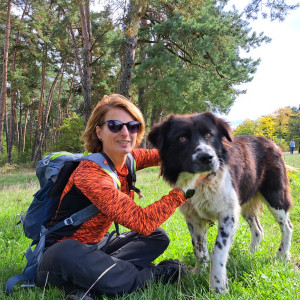
 65 REVIEWS
65 REVIEWS
